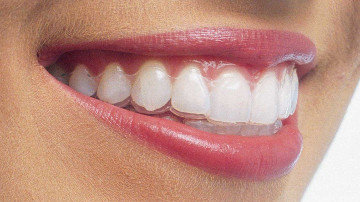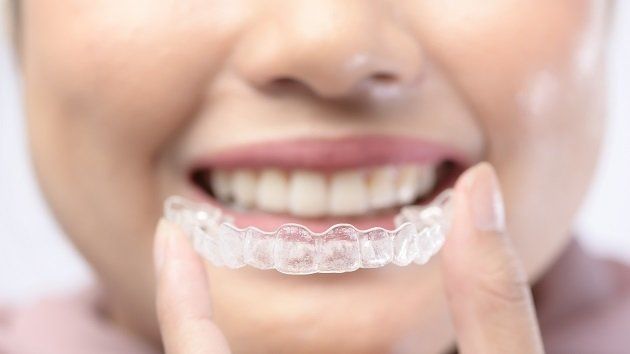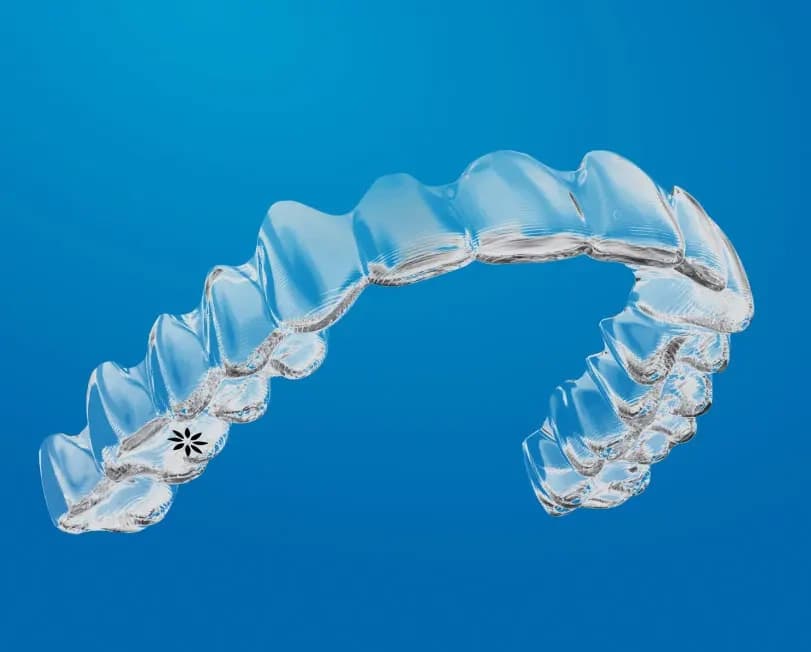Success Stories: How Invisalign Changed Lives and Enhanced Confidence
Success Stories: How Invisalign Changed Lives and Enhanced Confidence
Blog Article
Invisalign vs. Traditional Dental braces: Which Choice Is Right for You?
When thinking about orthodontic treatment, the selection between Invisalign and traditional braces offers numerous important factors that merit careful examination. Invisalign uses a discreet choice with detachable aligners, while traditional braces offer a more visible yet reliable option for extreme imbalance. Each alternative includes distinctive benefits and disadvantages associated with visual appeals, comfort, therapy period, and cost. Understanding these nuances is critical for making an informed choice that aligns with your personal preferences and way of life. The inquiry stays: which option will ideal satisfy your orthodontic needs and expectations?
Introduction of Treatment Options

On the other hand, traditional braces are composed of metal brackets and wires that are bonded to the teeth. This method applies continuous stress in time to attain positioning. While reliable for complicated orthodontic problems, conventional dental braces require regular gos to for changes and can position difficulties in keeping oral health due to the trouble of cleansing about braces and cords.
Both options have their values, and the option frequently depends upon specific oral conditions, lifestyle preferences, and client compliance. Eventually, speaking with an orthodontic specialist is important for identifying the most ideal treatment strategy customized to specific demands. Comprehending the nuances of each option can substantially influence the general success of orthodontic treatment.
Visual Factors To Consider
A substantial aspect influencing the selection in between Invisalign and traditional dental braces is the visual charm each therapy provides. Invisalign aligners are crafted from clear plastic, making them virtually undetectable when worn. This discreet appearance is especially attracting young adults and grownups that might feel self-conscious concerning their orthodontic therapy. The capacity to maintain a natural smile throughout the placement process can significantly enhance the client's confidence in specialist and social settings.
On the other hand, traditional dental braces contain steel brackets and cables, which can be a lot more noticeable. While innovations in orthodontic innovation have actually brought about the advancement of smaller sized braces and colored elastics, standard braces still keep an even more obvious profile. For some people, the visibility of dental braces might deter them from seeking required treatment.
Ultimately, the selection in between Invisalign and standard dental braces might depend upon personal preferences pertaining to looks. People who focus on discretion commonly lean toward Invisalign, while those who are much less worried concerning exposure may choose conventional dental braces. Recognizing the visual implications of each alternative is vital for making an educated choice that lines up with one's way of living and preferences.
Convenience and Convenience

In terms of comfort, Invisalign aligners are removable, enabling people to appreciate their preferred foods without limitation and maintain optimum dental hygiene. Brushing and flossing are streamlined, as the aligners can be obtained throughout these regimens, whereas traditional dental braces require careful maneuvering around cords and brackets.
In contrast, standard dental braces demand routine modifications, making them less convenient for those with hectic routines. On the whole, the comfort and comfort of Invisalign make it an appealing choice for many individuals looking for orthodontic treatment.
Treatment Period and Effectiveness
While both Invisalign and conventional dental braces are efficient in remedying oral misalignments, the duration of treatment can differ dramatically between the two alternatives. Commonly, Invisalign treatment can take anywhere from 12 to 18 months, depending upon the intricacy of the case. The clear aligners function by progressively moving teeth into their wanted positions, and regular follow-ups with an orthodontist help make sure development stays on the right track.
On the other hand, standard dental braces usually call for a longer commitment, normally ranging from Home Page 18 months to 3 years. This is because of their fixed nature and making use of wires and braces, which can be a lot more reliable for intricate situations and extreme misalignments (Invisalign). The treatment performance of conventional dental braces is well-documented, as they permit for precise changes and better control over tooth movement
Inevitably, the selection between Invisalign and conventional braces might rest on both the anticipated treatment duration and the click certain oral problems at hand. Consulting with an orthodontist is important, as they can provide tailored suggestions based upon private demands, guaranteeing the picked technique lines up with preferred end results and durations.
Cost Comparison and Insurance Policy Choices
Cost plays a considerable duty in the decision-making process for individuals taking into consideration orthodontic therapy, whether opting for Invisalign or standard braces. On standard, the price of Invisalign arrays from $3,000 to $8,000, while conventional braces normally cost in between $2,000 and $6,000. Aspects influencing these prices consist of the intricacy of the instance, the duration of treatment, and geographical place.
Several oral insurance policy plans offer partial insurance coverage for orthodontic therapies, however the specifics can vary widely. Usually, conventional dental braces may be a lot more often covered by insurance policy plans compared to Invisalign, which some insurance firms classify as an aesthetic treatment.
In addition, numerous orthodontic techniques provide adaptable layaway plan, making both treatment alternatives extra accessible. Patients should make inquiries about potential funding choices and discounts for ahead of time repayments. Examining the overall expense, consisting of insurance coverage advantages and layaway plan, is essential for making a notified choice that aligns with both aesthetic choices and budget plan factors to consider.

Conclusion
In recap, the option between Invisalign and traditional dental braces depends upon multiple aspects, including aesthetic preferences, comfort, treatment duration, and cost. Invisalign uses a very discreet, detachable option that promotes oral health and dietary versatility, while traditional dental braces might Visit Website be better for intricate dental concerns and commonly come with a lower rate factor. Ultimately, appointment with an orthodontist is necessary to evaluate individual scenarios and identify one of the most suitable treatment choice for attaining optimum oral alignment.
When taking into consideration orthodontic treatment, the choice between Invisalign and standard dental braces presents a number of vital factors that merit careful assessment.Comparing Invisalign and conventional braces discloses distinctive treatment choices for orthodontic adjustment.While both Invisalign and conventional braces are efficient in correcting oral misalignments, the period of treatment can vary significantly in between the 2 alternatives.Expense plays a substantial duty in the decision-making process for people thinking about orthodontic therapy, whether opting for Invisalign or standard dental braces.In summary, the selection in between Invisalign and standard braces pivots on multiple aspects, consisting of aesthetic preferences, comfort, therapy duration, and cost.
Report this page